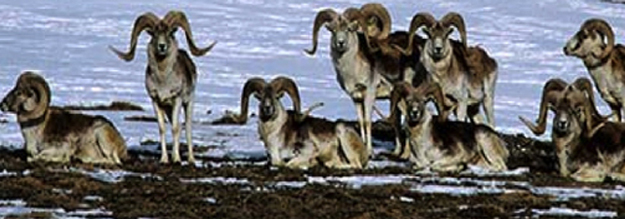
Most Marco Polo sheep live in the Pamir Mountains region adjacent to the borders of Pakistan, Afghanistan, Kyrgyzstan, Tajikistan and China. Their elevation ranges from 3,700 to 4,800 m (12,100 to 15,700 ft) above sea level; The subspecies lives mainly in the northwestern part of the Hunza district along the Chinese border; inhabiting the Kilik Mintaka border and the northwestern area of Khunjerab National Park. Marco Polo sheep also inhabit the Wakhan Corridor, along the Afghanistan border. They share much of their habitat with animals such as the Siberian Ibex.
The Marco Polo sheep (Ovis ammon polii) is a subspecies of argali sheep. The sheep are named after the 13th century explorer Marco Polo because he described them in his book The Travels of Marco Polo. Their habitat is the mountainous regions of Central Asia. Their conservation status is “near threatened”. It is the National animal of Afghanistan.
The sheep is particularly known for its long, spiraling horns which have been measured having a span up to 55 inches. They have the longest horns of all sheep, with the longest individual horn ever recorded measuring 1.9 m (6.2 ft) and weighing 27 kg.
The sheep rut in December. Gestation lasts about 160 days with single births being normal and twins uncommon. A captive ewe once gave birth to five lambs at once, then triplets two years later.
Marco Polo sheep have an average life span of 13 years. The horns develop rings each year by which the age of male animals may be determined. Since females do not have horns, however, it is harder to determine their age.
Marco Polo Sheep used under CC BY / Desaturated from original
